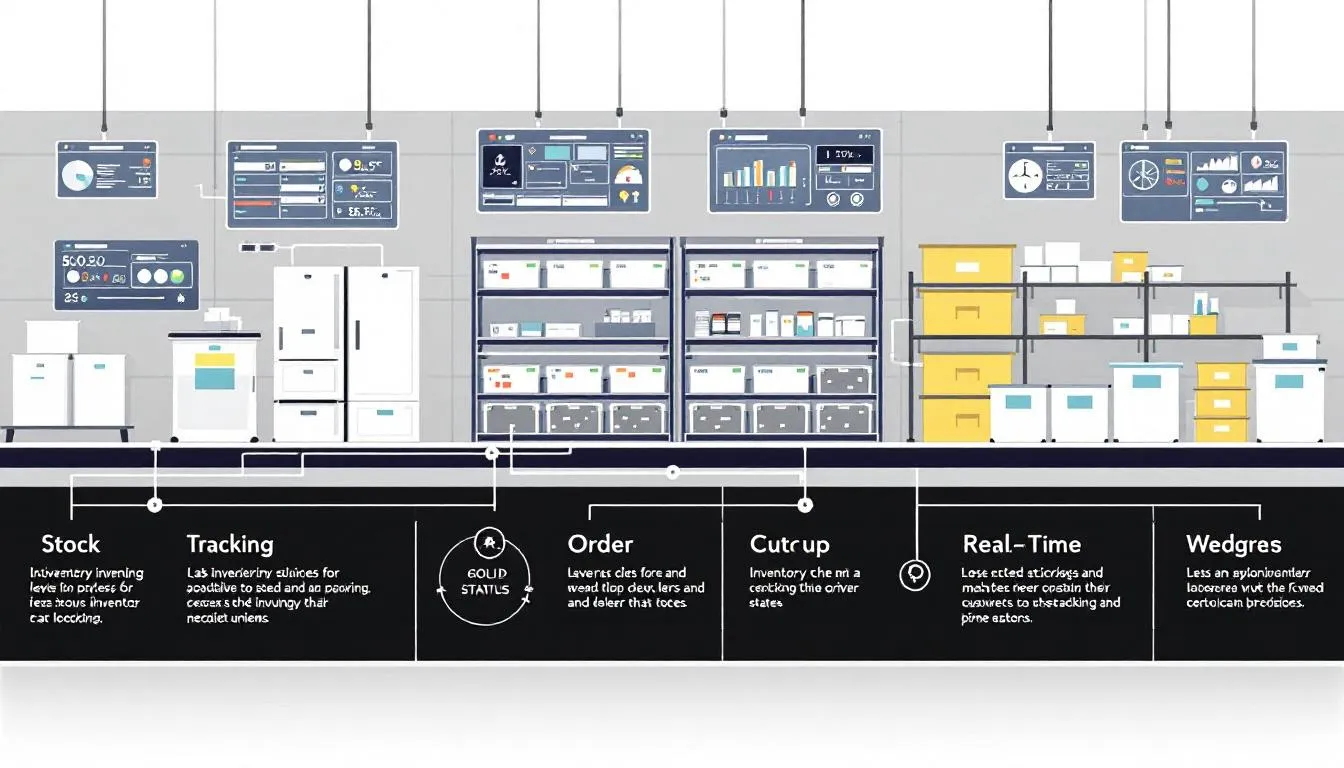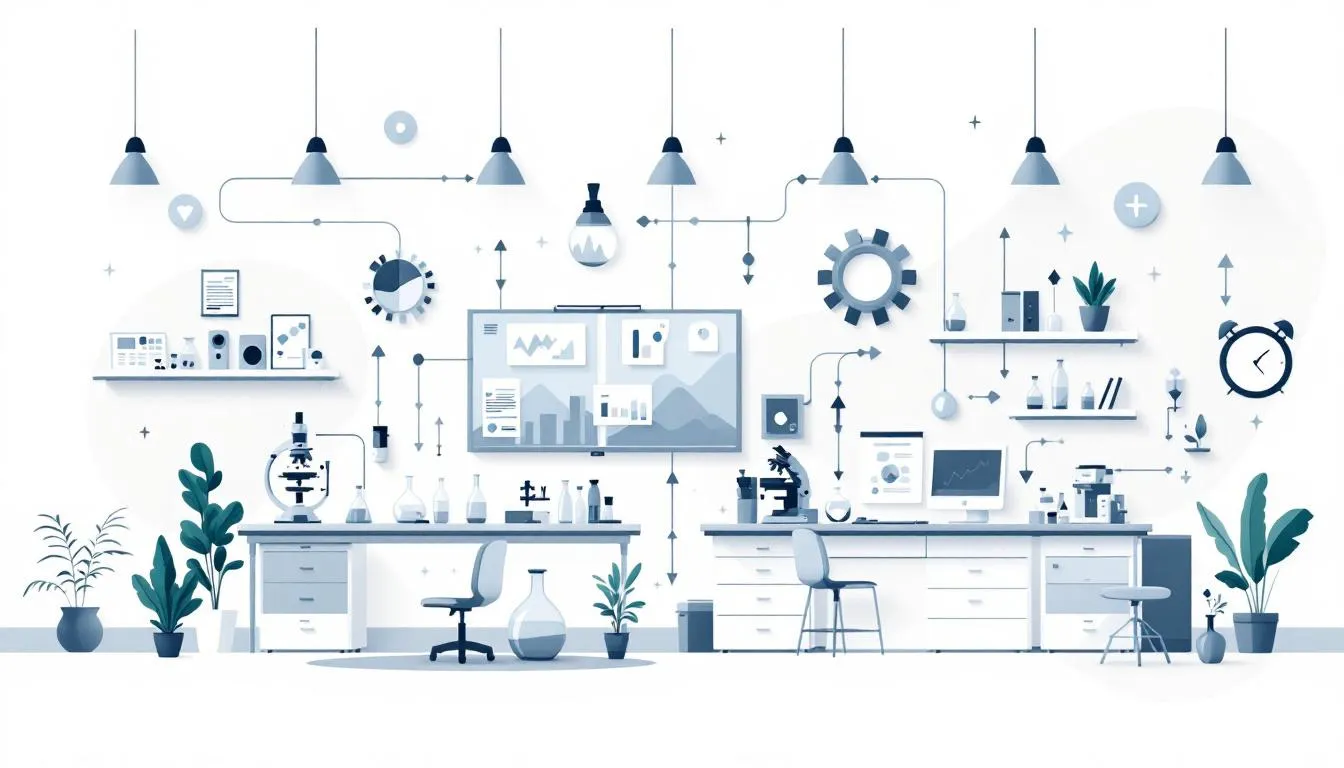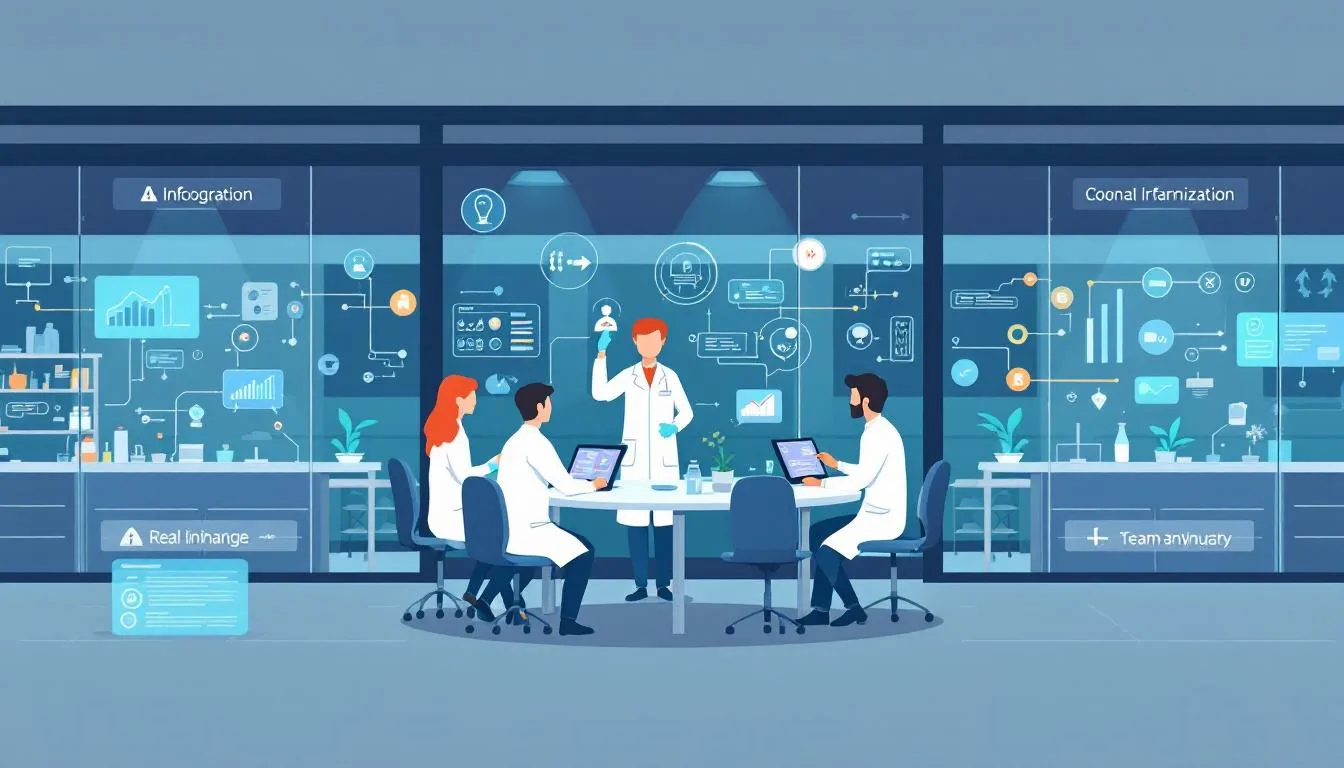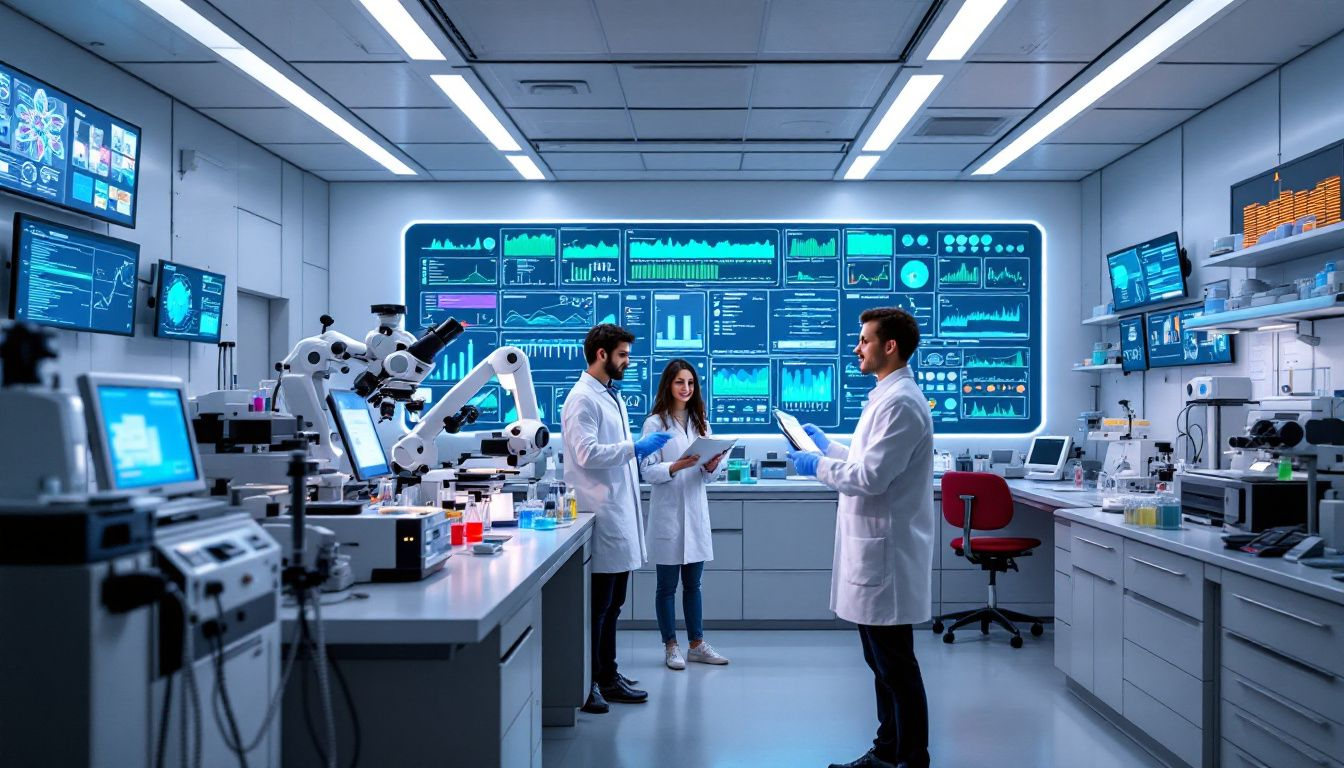Top 7 Advantages of LIMS for Modern Laboratories
Looking for the advantages of LIMS for your lab? A Laboratory Information Management System enhances data management and boosts efficiency.
This article will explore the top seven advantages of LIMS to show why it’s vital for modern labs.
Key Takeaways
-
LIMS centralizes data management, automating data entry and ensuring real-time access, which enhances accuracy and efficiency in laboratory workflows.
-
The system streamlines inventory management and enhances operational efficiency by automating tracking, thus minimizing waste and optimizing resource allocation.
-
LIMS improves regulatory compliance by maintaining accurate documentation, managing electronic records, and enforcing standard operating procedures, ensuring laboratories meet regulatory requirements.
1. Enhanced Data Management and Organization

One of the most significant advantages of a laboratory information management system is its ability to centralize data management. Laboratory information management systems centralize data by combining:
-
Sample tracking
-
Experiment workflows
-
Instrument metadata into one accessible platform. This centralization ensures that data is not only accurate but also easily retrievable, reducing the time spent searching for information and minimizing the risk of data duplication.
LIMS automates data entry processes, offering several advantages:
-
Significantly reduces the time and effort required for manual data entry.
-
Speeds up the data entry process.
-
Enhances data accuracy by reducing manual errors.
-
Integrates with lab instruments to facilitate faster and more accurate data entry, ensuring reliability and precision.
Real-time data access is another critical key features of LIMS. Key aspects include:
-
Researchers can quickly retrieve and analyze information, enabling them to make informed decisions promptly.
-
This real-time access is particularly beneficial for labs dealing with genomics data, where timely data retrieval can be crucial.
-
LIMS supports easy searching of a single data source, making data retrieval a seamless process, along with associated data.
-
LIMS manages and organizes test data, ensuring accurate handling for compliance and reporting.
Standardizing workflows is another way LIMS enhances data organization. LIMS minimizes errors and discrepancies in data collection, ensuring that laboratories consistently follow standard operating procedures. This standardization not only improves data integrity but also streamlines lab operations, making it easier for lab managers to oversee and manage laboratory processes effectively. LIMS also plays a crucial role in providing accurate controls throughout laboratory processes, supporting calibration, data collection, and workflow standardization to enhance accuracy and compliance.
2. Streamlined Inventory Management

Efficient inventory management is crucial for any laboratory, and LIMS solutions excel in this area by:
-
Automating inventory tracking, reducing manual errors
-
Providing a real-time view of inventory levels
-
Ensuring labs can effectively manage their inventory
-
Reducing the risk of running out of essential supplies or overstocking items
LIMS also improves operational efficiency by standardising workflows and reducing waste. With real-time inventory tracking, labs can order inventory in time, which reduces waste and employee frustration from manual inventory checks.
This integration of inventory management into the lab workflow is one of the biggest benefits of a LIMS. Plus modern LIMS systems allow labs to manage their inventory better by giving them visibility into inventory usage patterns. This data can be used to optimise inventory levels so labs always have what they need without overstocking. Resulting in a more efficient and cost effective lab.
3. Increased Productivity and Efficiency

In the quest to improve lab efficiency LIMS offers many benefits by automating workflows and reducing manual processes. Workflow automation minimizes human error and lets labs do more in less time. By implementing a LIMS, laboratories can automate processes, which simplifies workflows and increases overall lab efficiency, especially as employees become familiar with the software.
Automated notifications are another feature of LIMS that boosts productivity. These notifications tell teams about critical changes and updates so everyone is on the same page and can respond to issues quickly. This real time communication keeps lab operations running smoothly and lets teams track progress.
LIMS also provides usage trend reports that are super useful for budgeting and resource allocation. These reports show reagent consumption over time to help labs manage their resources better. This means cost savings and overall lab efficiency.
The ability to automate and streamline workflows is one of the biggest advantages of LIMS. LIMS can increase productivity and employee satisfaction by reducing manual tasks and minimizing transcription errors. This means big benefits for the lab including better lab operations, increased throughput, higher customer satisfaction, business advantages and personnel management. Compared to traditional paper-based or spreadsheet methods, LIMS delivers significant benefits in efficiency, compliance, and overall lab performance.
4. Improved Regulatory Compliance
Regulatory compliance is a big part of lab operations and LIMS plays a key role in ensuring labs meet regulatory requirements set by regulatory bodies. LIMS helps with regulatory compliance by managing data integrity and accurate documentation and providing quality controls. Additionally, LIMS systems mitigate the risk of data breaches through built-in security measures and compliance with industry standards, ensuring sensitive data remains protected.
One way LIMS supports regulatory compliance is by automating data collection and electronic records. This is critical for regulations like 21 CFR Part 11 which requires electronic records to be accurate and secure. An audit trail is a crucial feature for regulatory compliance, as it tracks all data changes, including who made them, when, and why, and retains previous data versions, supporting certifications like 21 CFR Part 11 and ISO 17025. LIMS systems also maintain audit trails that track all user interactions with data so there’s a clear record for regulatory review.
LIMS supports regulatory compliance through several key functions:
-
Maintaining audit trails
-
Enforcing standard operating procedures (SOPs) digitally, ensuring consistent adherence to regulatory requirements
-
Minimizing manual errors and enhancing data accuracy via digital SOP enforcement
-
Enabling better protocol version control to comply with changing regulatory standards
5. Superior Sample Tracking and Management

Effective sample tracking and management are crucial for any laboratory, and LIMS excels in this area. LIMS tracks samples throughout their lifecycle, ensuring that all details, including ID, source, and test results, are accurately recorded. Tracking samples and associated data throughout the testing process is essential for enhancing efficiency, data accuracy, and regulatory compliance. This comprehensive tracking enhances data integrity and sample throughput, ensuring that samples are managed efficiently.
LIMS automates all aspects of the sample lifecycle, including:
-
Sample receipt
-
Linking experimental data to specific reagent lot numbers for accurate controls
-
Capturing who interacted with each sample
-
Tracking the sample’s location within the lab
-
Final disposal
This automation ensures complete traceability and effective sample management.
Moreover, LIMS facilitates the tracking of sample delivery and status, ensuring better coordination between labs and external clients. With remote data access, laboratory personnel can manage samples from any location, enhancing collaboration and improving overall lab efficiency.
6. Enhanced Collaboration and Communication

In today’s interconnected world, effective collaboration and communication are essential for laboratory success. LIMS improves remote access for lab members. Now, they can access data and inventory from any location. This remote access enhances collaboration among laboratory staff and improves project productivity. A modern lab leverages advanced laboratory information management systems (LIMS) to streamline tasks, enhance collaboration, and improve employee satisfaction by making lab work more efficient and enjoyable. Furthermore, LIMS integration reduces downtime by simplifying system maintenance and facilitating seamless collaboration across departments, ensuring uninterrupted lab operations.
LIMS systems enhance collaboration and communication among lab employees by enabling remote access to data and inventory through cloud based lims. This seamless integration of data and communication tools ensures that all lab members are on the same page, leading to increased productivity and streamlined workflows. An information management system lims can further optimize these processes, providing a comprehensive lims solution. Using a LIMS also enhances the speed to market for laboratory services and products by improving data management and collaboration, enabling labs to deliver results more efficiently.
Contract research organizations (CROs) and other external partners also benefit from the enhanced communication capabilities of LIMS. LIMS keeps all stakeholders informed with real-time access to data and project updates, enabling timely, informed decisions. This improved communication leads to better project outcomes and higher customer satisfaction, along with valuable vendor support.
7. Advanced Reporting and Data Analysis
Advanced reporting and data analysis are critical components of modern laboratory operations, and LIMS offers robust features in this area. Automated report generation in LIMS reduces manual input and enhances overall data accuracy. LIMS ensures that reports are reliable and precise by minimizing manual errors.
LIMS systems provide a wide range of reporting options, including automated reports and visualization tools. These features allow laboratories to create customized reports tailored to their specific needs, providing real-time insights into lab operations. This real-time data access aids in informed decision-making and helps labs to optimize their processes using a lims system and lims software.
In addition to automated reports, LIMS provides many out-of-the-box reports and options for creating custom reports. These reports include detailed audit trails and test protocols, ensuring that all data points are accurately recorded and easily accessible. By reducing reporting overhead and providing comprehensive data analysis, LIMS supports better decision-making and enhances overall lab efficiency.
Implementing a LIMS: Key Steps and Considerations
Successfully implementing a LIMS requires careful planning and a clear understanding of your laboratory’s unique needs. The first step is to define your requirements—identify the types of data you need to manage, the workflows you want to automate, and the key features that will support your lab’s goals. Consider how the LIMS will integrate with your existing systems and what level of customization is necessary.
Summary
In summary, the benefits of LIMS for modern labs are clear. From data management and inventory tracking to productivity and compliance, LIMS is the answer to all your lab’s problems. By automating and giving you real time data LIMS means your lab runs smoothly and efficiently.
We’ve covered this in the blog post, LIMS is a game changer for your lab. Whether you want to improve data accuracy, collaboration or workflows LIMS has the tools to help you achieve that. Get with the times and get the most out of your lab.
Frequently Asked Questions
How does LIMS enhance data management in laboratories?
LIMS enhances data management in laboratories by centralizing sample tracking and experiment workflows, which ensures data accuracy and allows for quick retrieval. This integration significantly improves efficiency and reliability in laboratory operations.
What are the benefits of using LIMS for inventory management?
Using LIMS for inventory management streamlines tracking, minimizes errors, and offers real-time visibility into inventory levels, ultimately improving operational efficiency and employee satisfaction.
How does LIMS improve regulatory compliance?
LIMS enhances regulatory compliance by ensuring data integrity, maintaining comprehensive audit trails, and digitally enforcing standard operating procedures. This structured approach helps organizations meet stringent regulatory requirements effectively.
Can LIMS help with sample tracking and management?
Absolutely, LIMS enhances sample tracking and management by ensuring traceability and improving data integrity throughout the sample's lifecycle. This leads to more efficient processes and better overall management of samples.
What advanced reporting features does LIMS offer?
LIMS provides advanced reporting features such as automated report generation, customized reports, and real-time insights, improving data accuracy and minimizing manual input in laboratory operations.
Share this
You May Also Like
These Related Stories

LIMS Software for Small Laboratories

What is a Laboratory Information Management System?
.png)

No Comments Yet
Let us know what you think